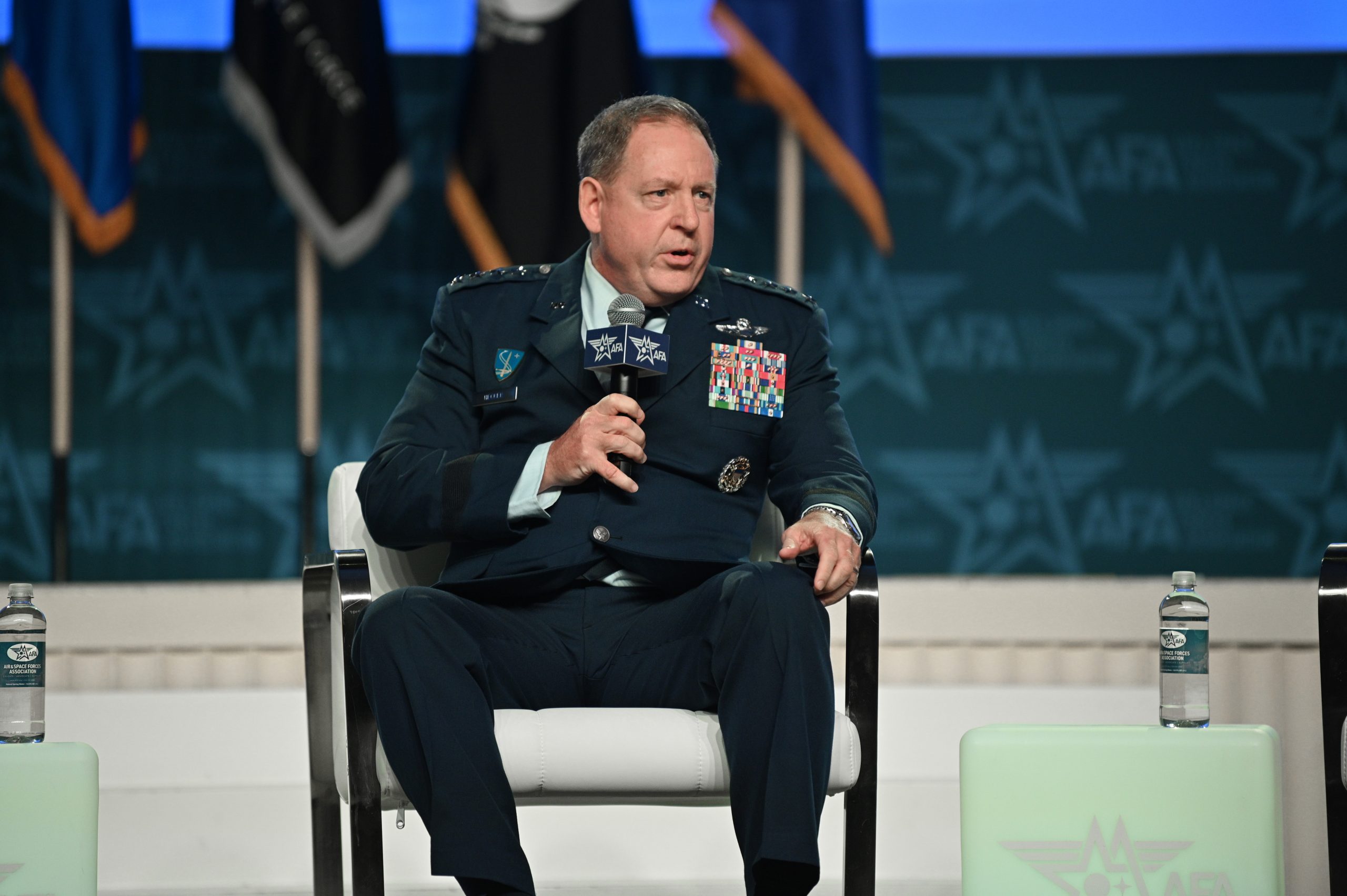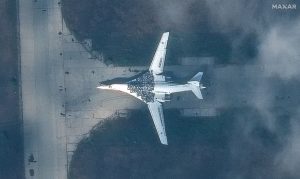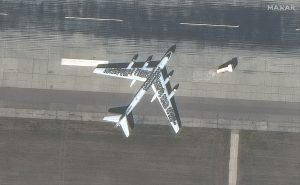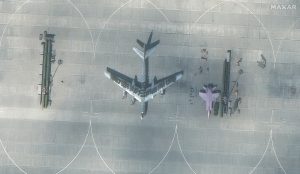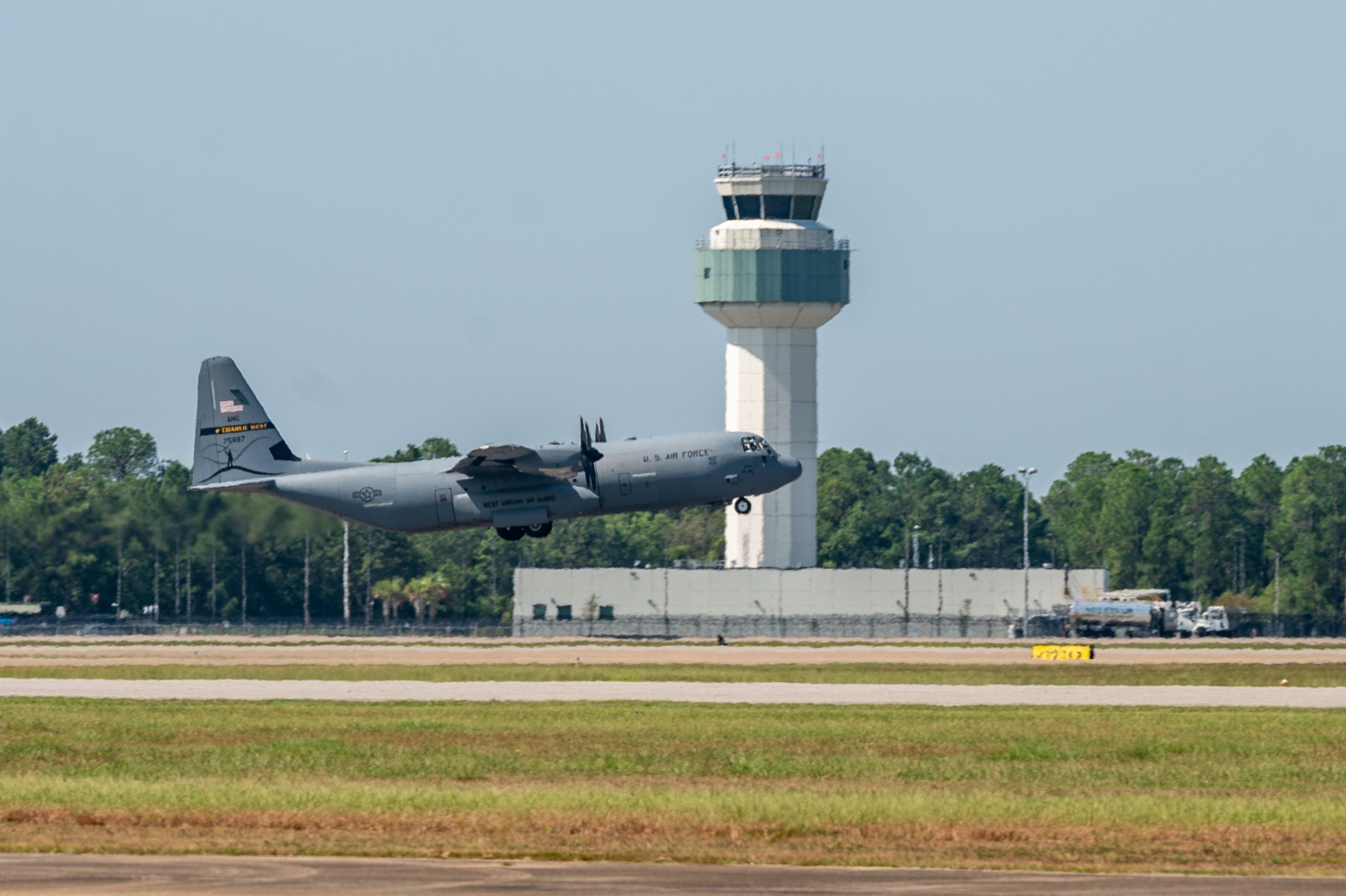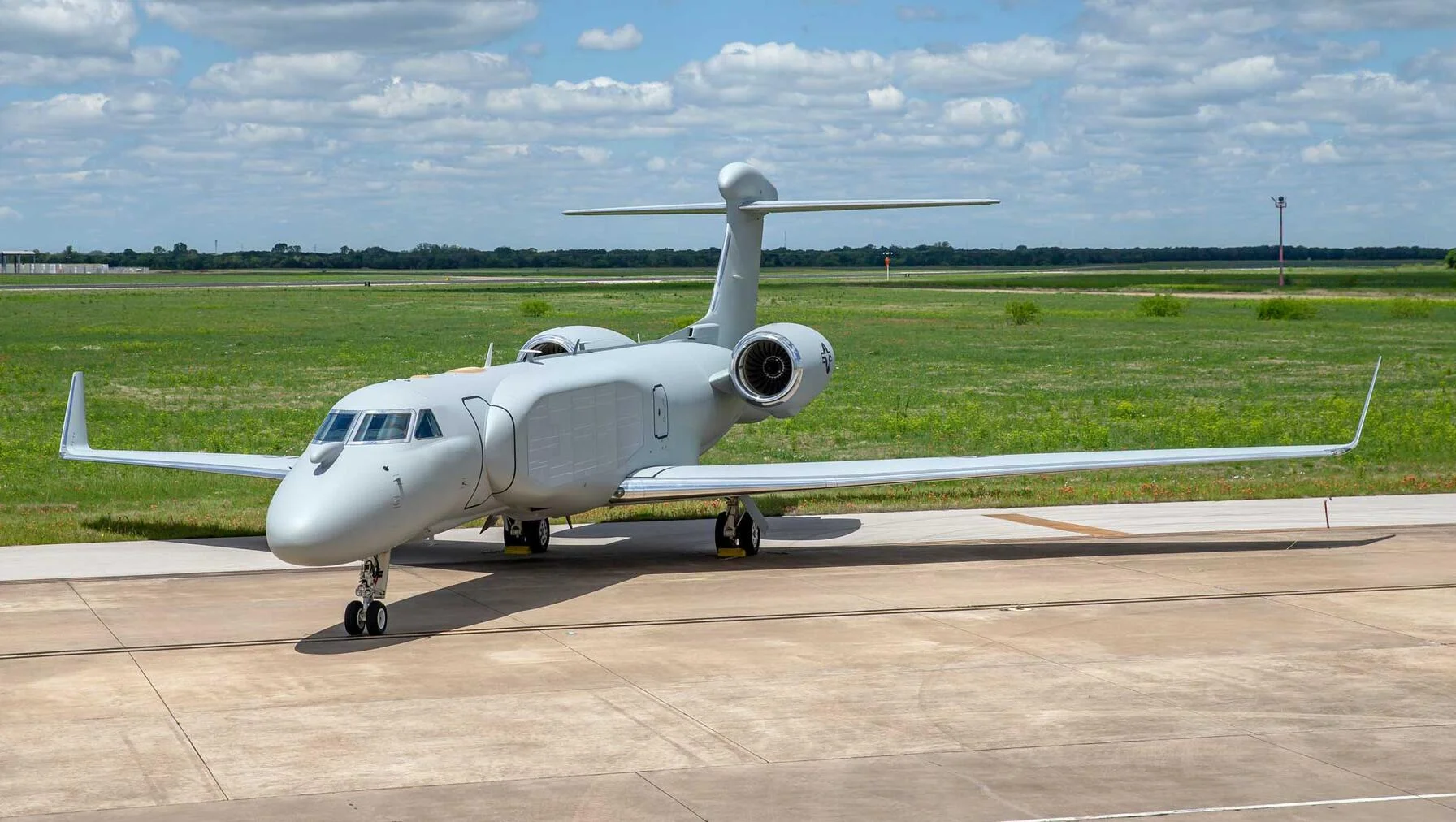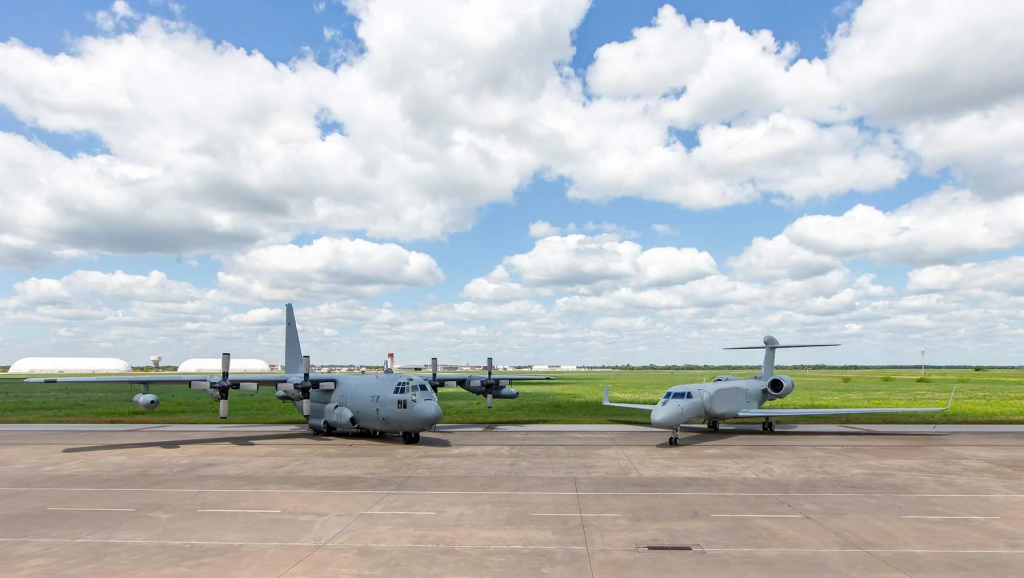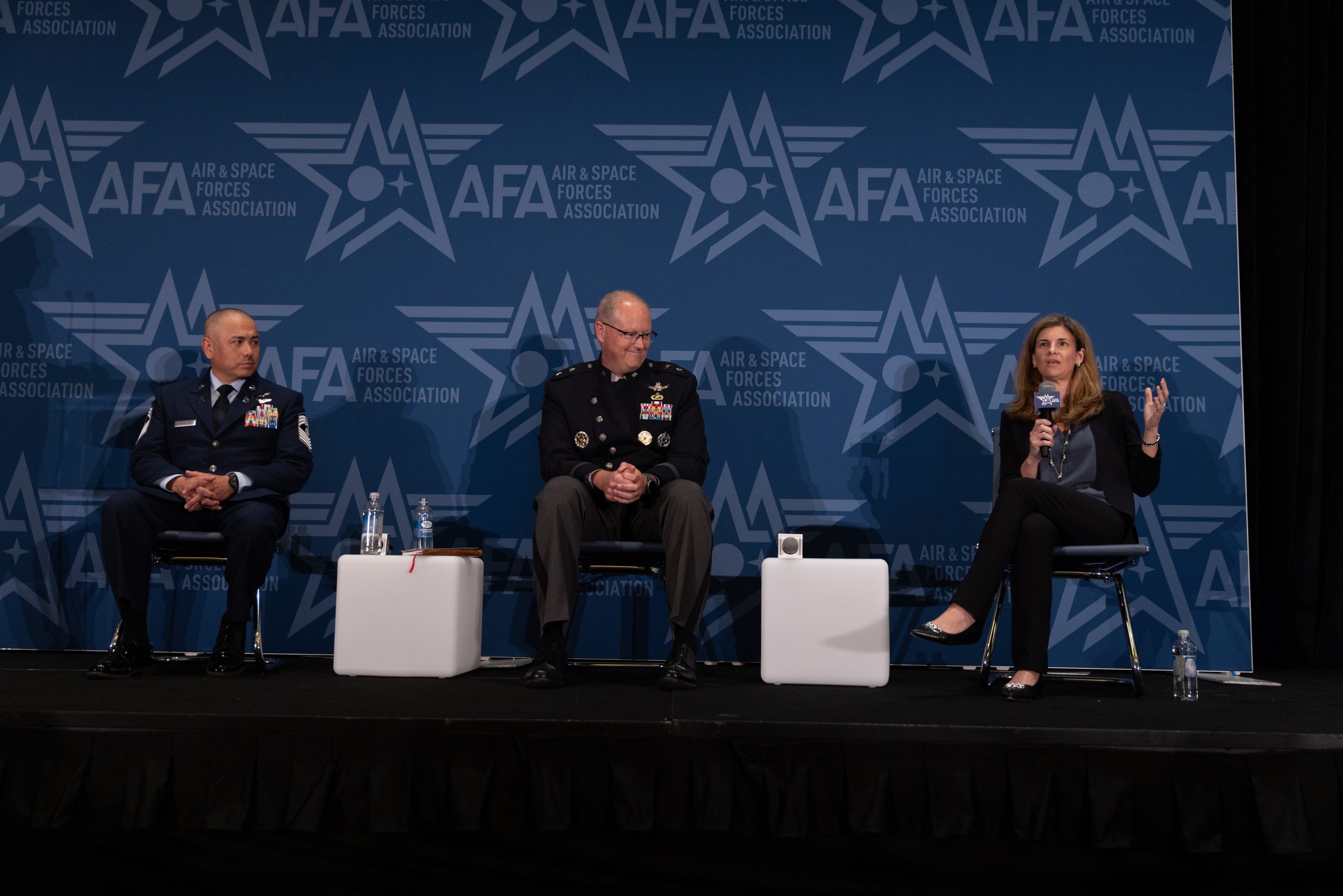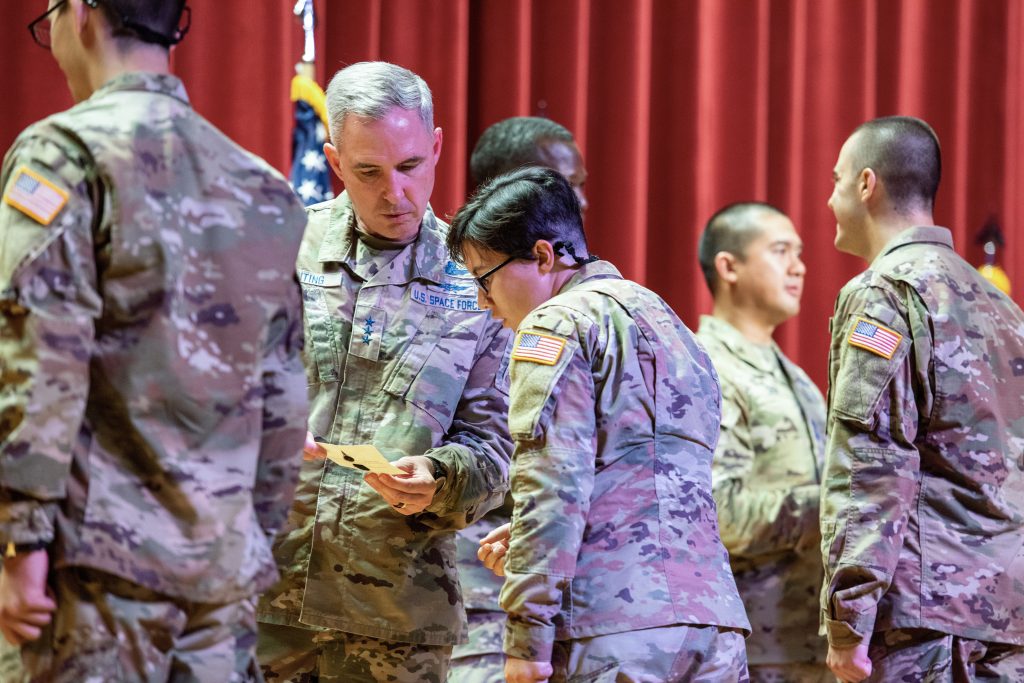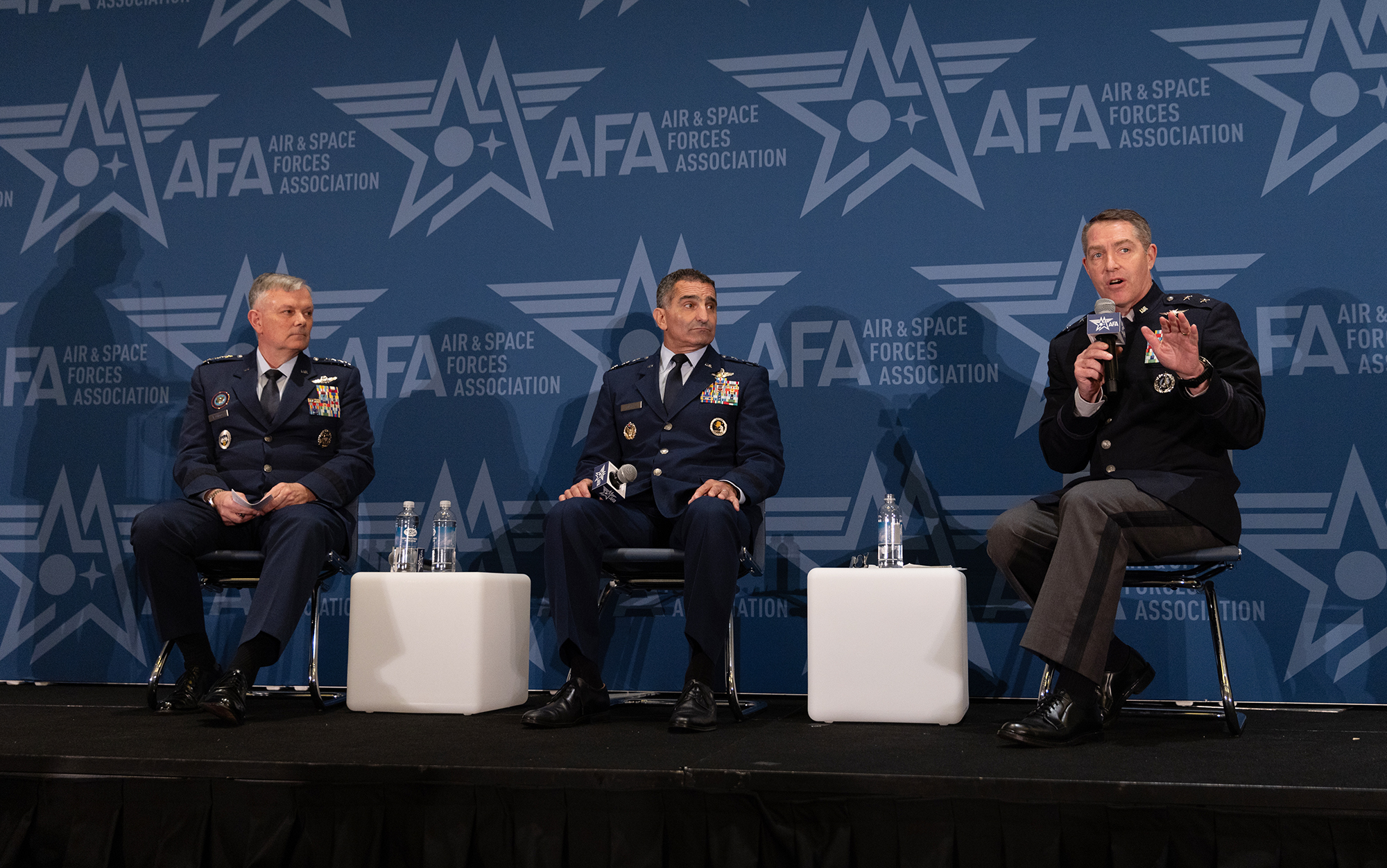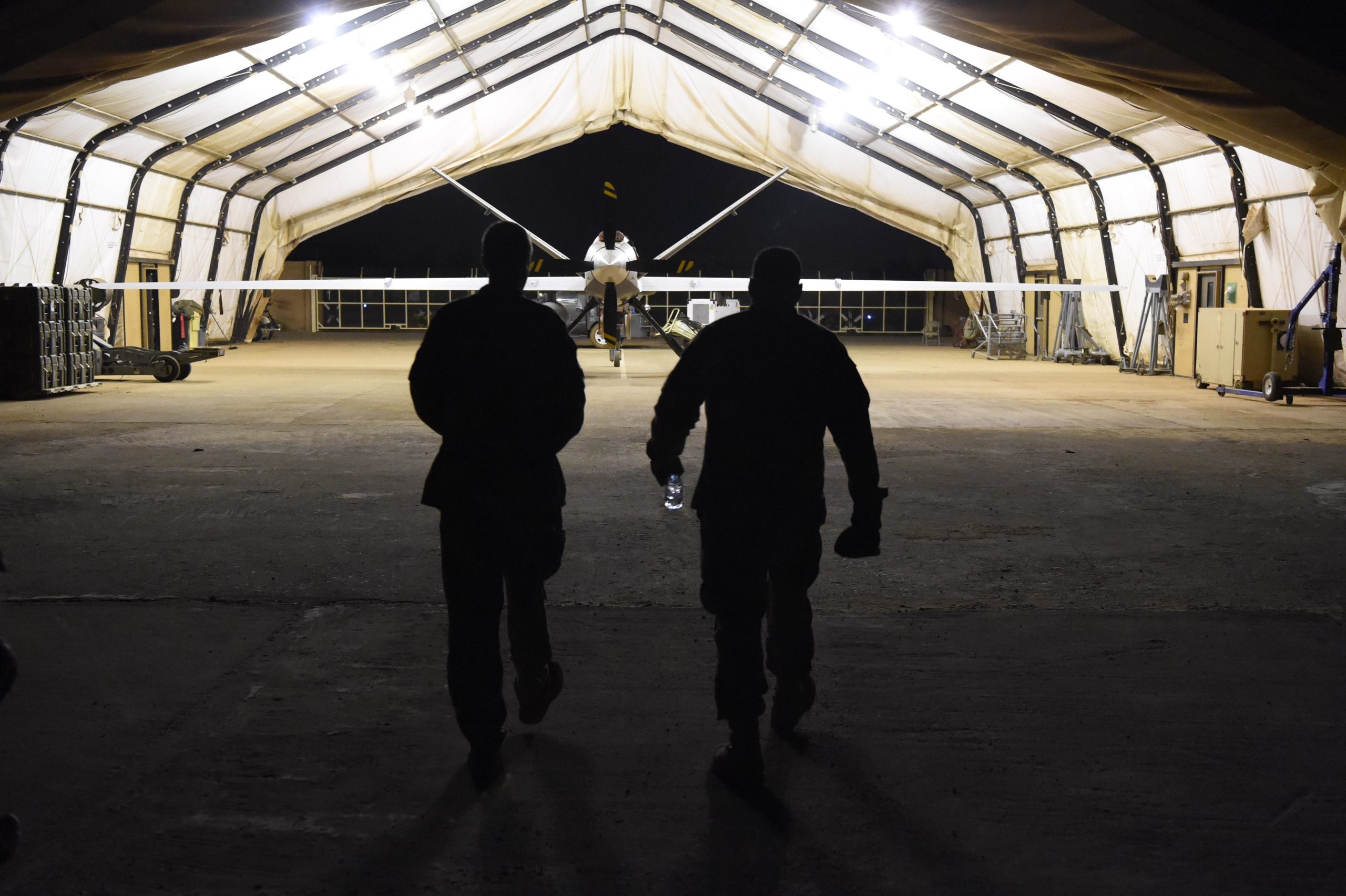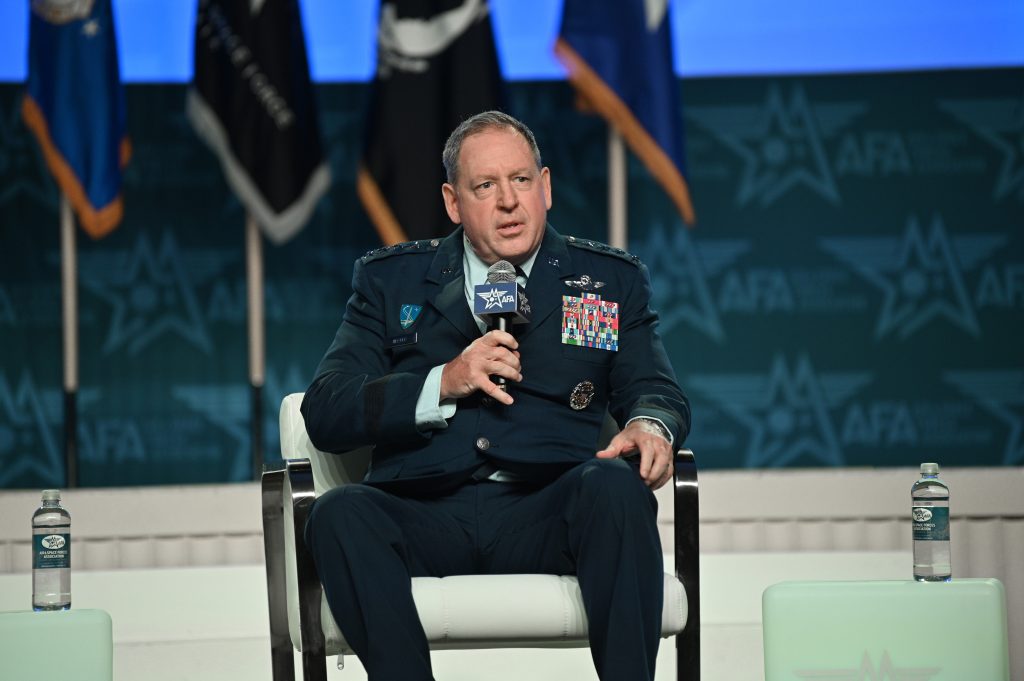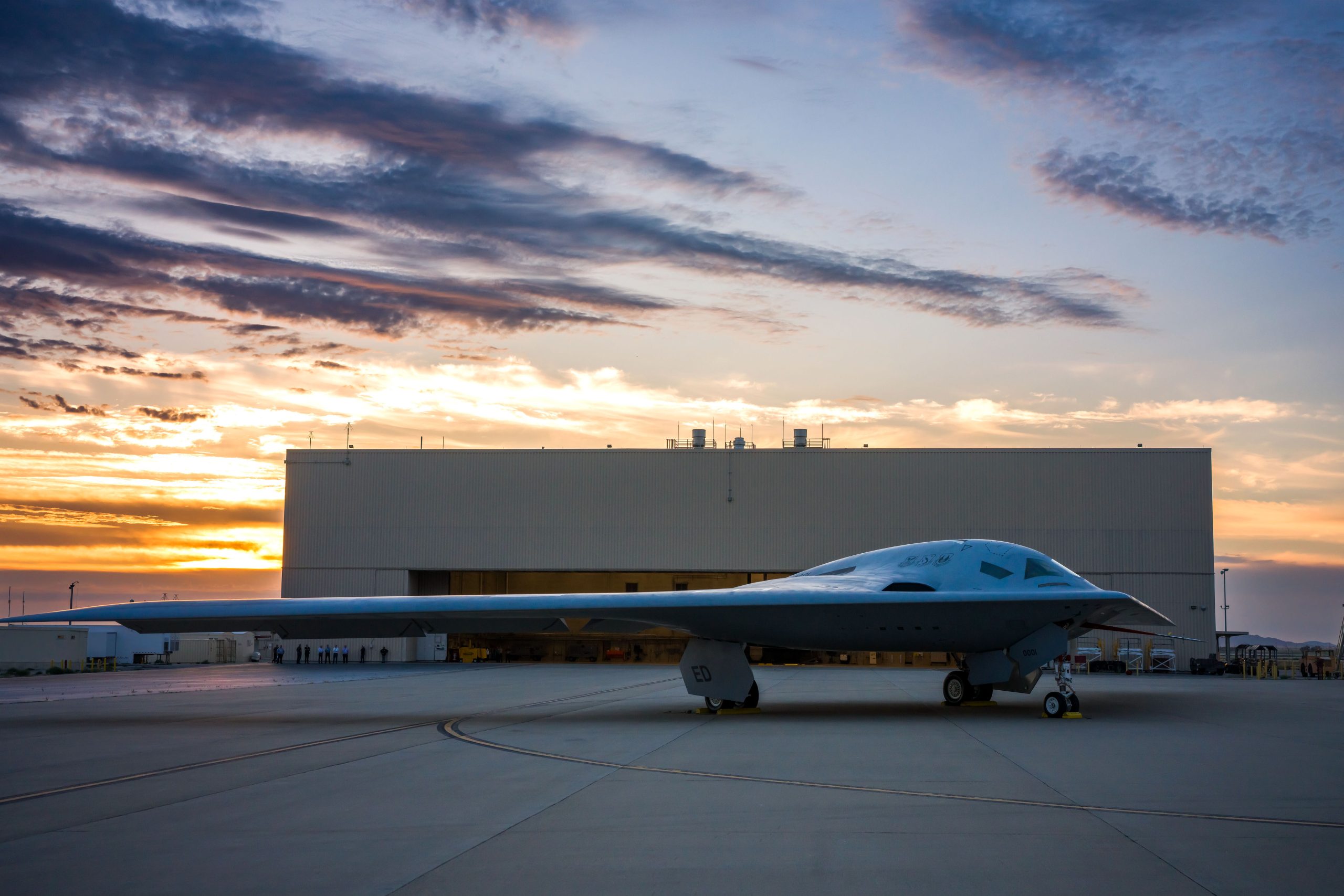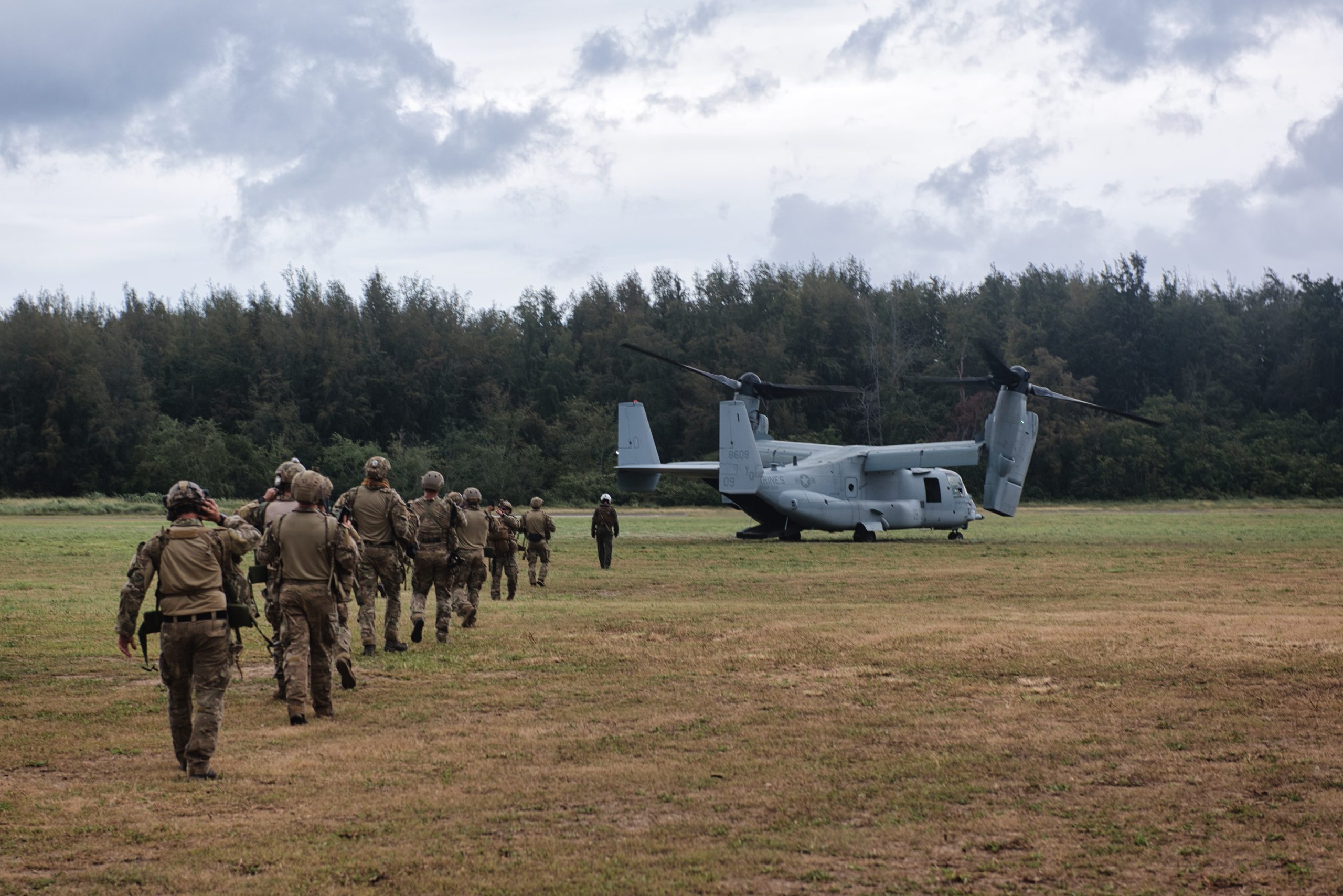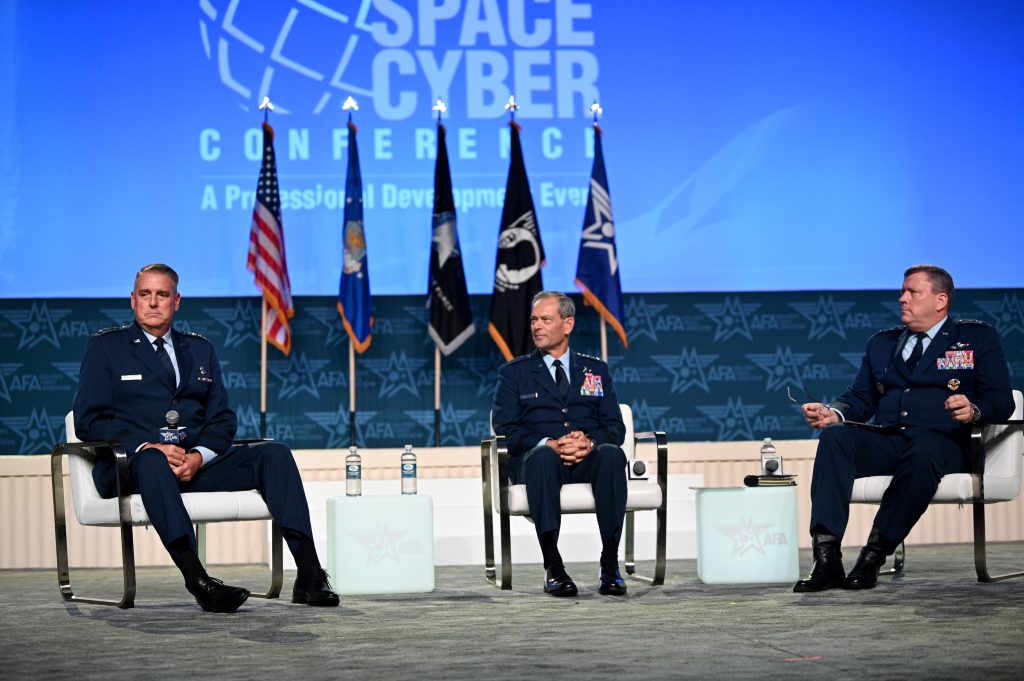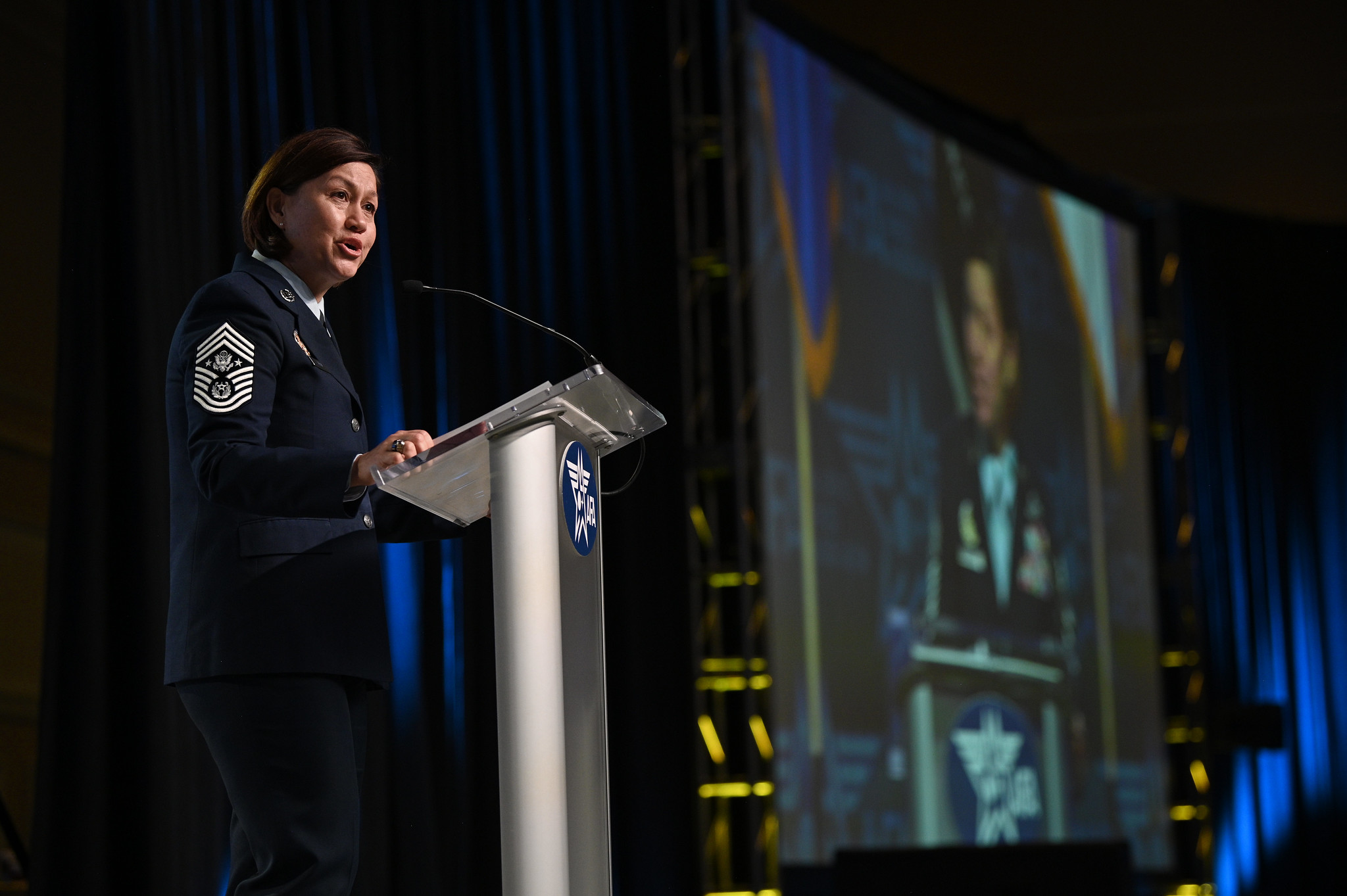The Russian Air Force has substantially revised its tactics in Ukraine and is holding down its losses by carrying out less effective bombing runs, Gen. James B. Hecker, the commander of U.S. Air Forces in Europe-Air Forces Africa said Sept. 13.
At the start of the Russian invasion of Ukraine, Russian warplanes flew into the thick of the Ukrainian air defenses and took serious losses, according to Western officials and military analysts. More than 75 Russian planes were shot down, Hecker said at AFA’s Air, Space & Cyber conference.
“When it first started out, they were flying right into the surface-to-air missile engagement zones of the Ukrainians,” Hecker said in an interview with Air & Space Forces Magazine. “So they now don’t fly in those rings, or if they do, it is for low altitude for very quick moments and then they go back out.”
The switch in tactics, however, has required a tradeoff.
“That’s adapting for saving aircraft, but obviously it doesn’t bode well for dropping bombs and trying to gain air superiority,” Hecker said.
Restocking and improving Ukraine’s air defense has been a top focus of Western aid to Kyiv, a decision Hecker supports and one that aligns with his separate mission as NATO Allied Air Commander to bolster the alliance’s air defenses.
Russian have forces suffered major losses following their February 2022 invasion of Ukraine. According to a Western defense official, Russian forces have suffered over 270,000 troops killed and wounded and lost more than 2,000 tanks and 4,000 armored fighting vehicles.
Though Russian air operations have also come at a cost, the Russian Air Force is largely intact, Hecker added.
In terms of precision munitions, Hecker noted, Russia has sought to preserve its inventory. Yet Moscow still appears to have adequate supplies of AS-23 and AS-4 cruise missiles as well as one-way attack drones supplied by Iran.
“We’re still seeing those on a regular basis, and those are fairly precise,” Hecker said. “When it comes to doing [things] like close air support for some of their army folks that are on the ground, there it is primarily non-precision weapons.”
While Ukrainian drone attacks against air bases inside Russia had prompted the Russians to disperse some of their aircraft, they have done little to reduce Moscow’s long-range strike capability, Hecker said.
The Russians have also put tires on the wings of some of their bombers to protect the planes against drone strikes and perhaps reduce their thermal signature.
Commercial satellite images provided to Air & Space Forces Magazine by Maxar Technologies indicate that the Russians have placed rows of tires on the wings of Tu-95 and Tu-160 bombers at their Engels air base. Social media images also show tires on a Russian Su-34 fighter-bomber.
“There’s been some successful attacks inside of Russia from Ukraine that have taken out some of their long-range aviation assets,” Hecker told a media roundtable at the conference. “But in the big scheme of things, their air force is still fairly intact. Not the case as much with their army.”
